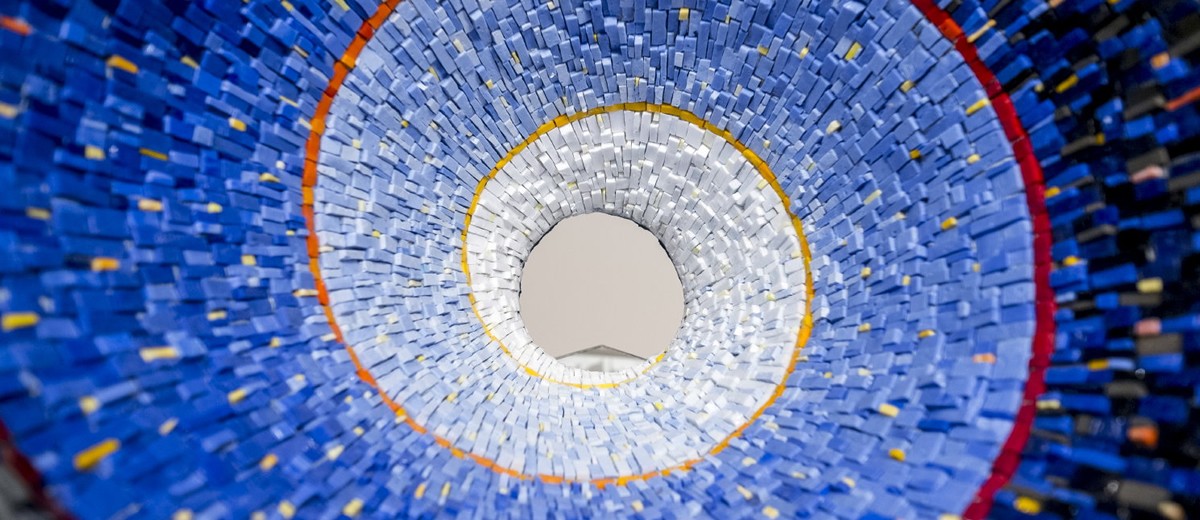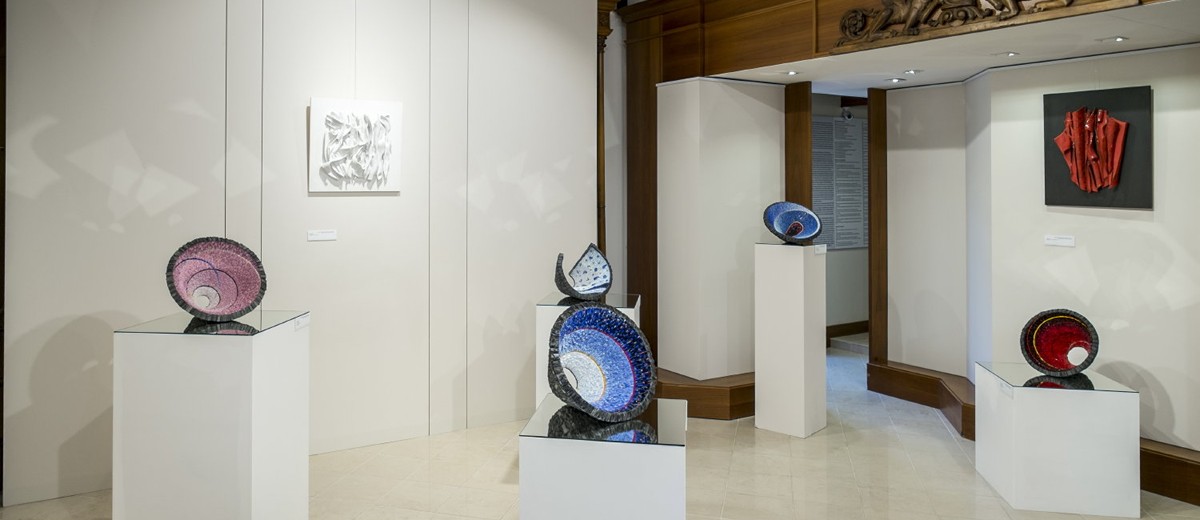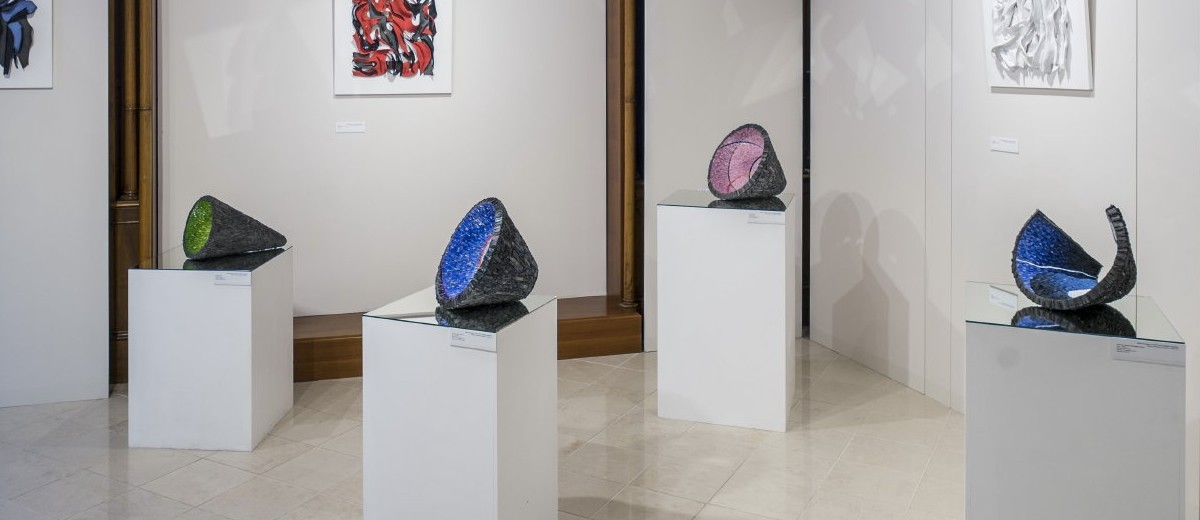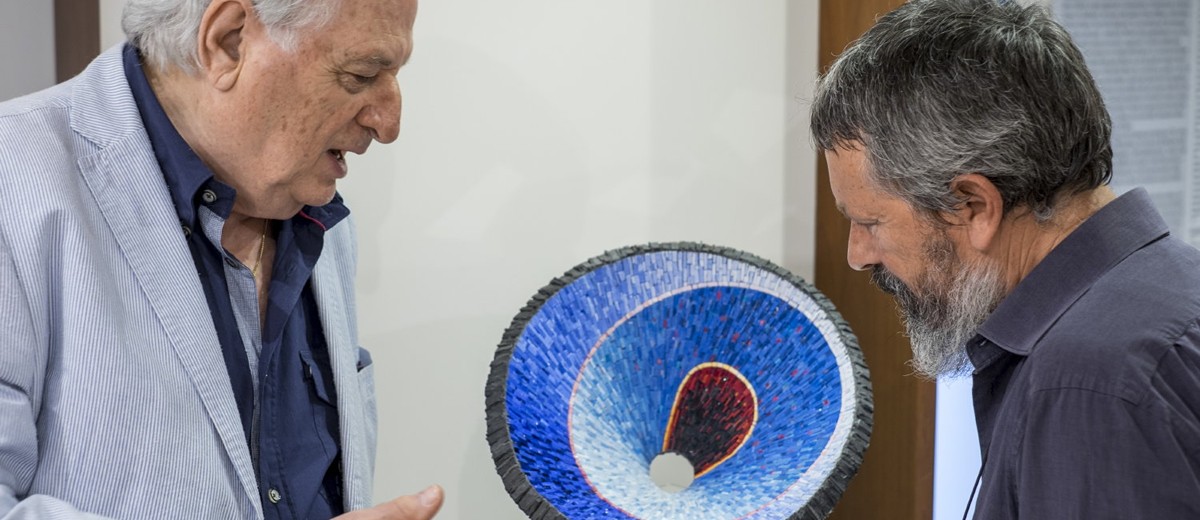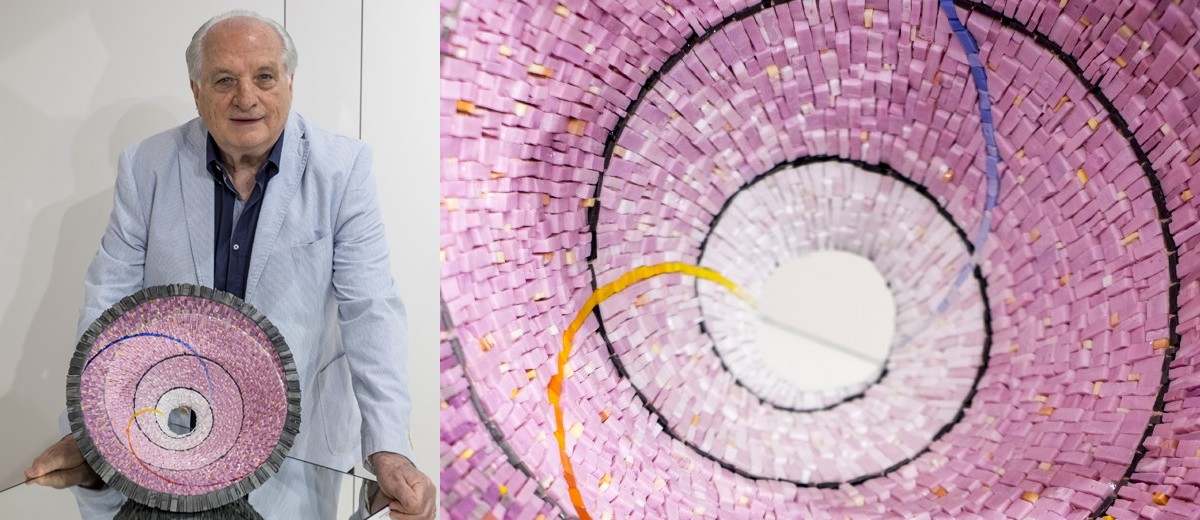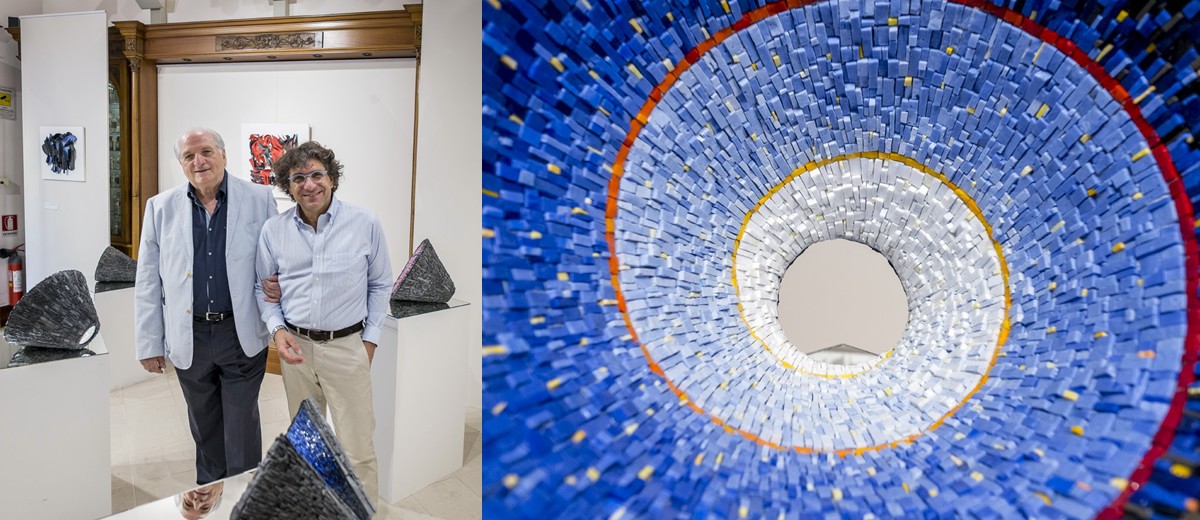Shopping cart
No products
Prices are tax included
Michele Cossyro’s Black Holes
At a time when the world awakens to the news that the actual existence of “gravitational waves” has been demonstrated, a hundred years after Albert Einstein theorized and predicted them in his theory of general relativity, it comes as almost no surprise that art, just like science, has its harbingers of things to come.
I am referring to the work of Michele Cossyro, who never ceases to amaze by the anticipatory value of his sculptural research into particularly original and surprising forms, evoking the awesome phenomena that modern and then contemporary physics has been investigating for some time. My allusion is to his most recent works titled black holes, like the objects that have been identified at the core of the countless galaxies in the universe.
Yet Cossyro’s work is even more astounding when one considers that the historic announcement of the actual detection of gravitational waves fell into those same days and weeks in which he was creating a number of variations of the black hole form through specular doubling. He called the result Collision, just a few weeks before learning (11th February 2016) of the catastrophic event in which two black holes, each weighing tens of solar masses, collided and engulfed each other, sending gravitational shock waves into space like ripples on a lake, which travelled for millions of years before reaching the monitoring arrays specially devised by astrophysicists to detect their existence.
Already well known, Cossyro’s 1984 oil-on-canvas painting Spirit of Fire (40 x 40 cm), shown at the Hobelix gallery in Messina in an exhibition presented by Eva di Stefano in 1985, unexpectedly preluded to and anticipated his later cycle of works inspired by black holes and more recently by Collisions (crushed forms), a term which was used just a few days ago to refer to the catastrophic cosmic event. No less relevant and highly evocative for its use of a crab trap is Black Hole-Crab trap, created by Cossyro in the 1990s. If Lucio Fontana’s “holes” or “spatial concepts” of the 1950s pioneeringly provided an ideal physiognomy for the identity of sidereal or even atomic space, Cossyro with his black holes has pushed the boundaries to even further extremes. Indeed, the cycle of black holes (2010-2016) conceived and realized by Cossyro in glass and slate tesserae, and placed on the ground on polished stainless steel plates, or suspended in mid-air, allows us to envision and become aware of a reality otherwise invisible, pertaining to astronomical phenomena that involve thousands of solar masses and gravitational wells capable of swallowing light, therefore preventing its diffusion. Cossyro’s black holes present a surprising polychromy.
On the other hand, when looking at visualizations of the accretion disk around the black hole at the core of our galaxy, the Milky Way, we notice they feature all visible colours. It cannot be overlooked that the author of a dense essay about black holes has recently mused upon the question whether they are really black. “The answer is yes and no. They are black in the sense that nothing can escape their event horizon (...). However they are not really black because the material falling into the black hole causes a great release of energy that is easily observable.
In this sense the most massive black holes may give rise to the most powerful light sources in the universe: active nuclei” i Cossyro is rather more impressed by the awesome phenomenology of the forces involved, and by the sublime dimension into which the astrophysicist projects us. In his black holes, he stresses the aspect of astonishment instilled by these vortexes of light, created from glass tesserae placed with great precision and quality of polychrome combination, to admirable effect.
Differing forms illustrate various hypotheses of astral formation, displaying a visionary nature that is wholly imaginary and accentuates the marvel of those sculptural bodies. And often the poetic dimension is closer to reality than one imagines. Among the repertoire of forms conceived and realized in a wide variety of mosaic materials such as slate and glass tesserae, African black marble, Sicilian jasper, Belgian black marble and glazed ceramics, a number of atypical morphological variations diverge from the conical format, such as Black Hole - Orange Arch (2014), Double Red-Black Hole (2014), Torn Black Hole (2015) and Black Hole - Cosmic Landscape Rift (2015), Black Hole – Black-Blue Collapse (2015) and Black Hole – Light Blue Collapse (2015).
These works feature helical or open cone structures, and like Black Hole – Cosmic Saddle (Hoe) of 2011-2013, they suggest other possible accretions of matter around the sublime and terrifying threshold of the event horizon. Following the Palermo installation at the Real Albergo delle Povere in 2014, particularly captivating due to the dim lighting in which the works were immersed, the exhibition in Rome devoted to these new creations establishes Cossyro’s undoubted primacy in the cosmic evocation of these forms.
The artist from Pantelleria makes a bold proclamation, not just formal but poetic, about a reality still largely unknown but not inaccessible to his ever restless visual thought.
Bruno Corà

